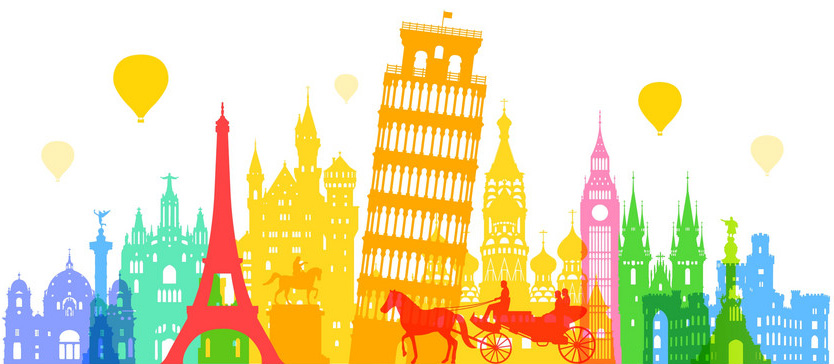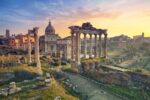Top 3 Historical and archaeological Cities in Albania
Albania is a country that has yet to hit the map of most European tourists even that has recorded some growth in last years. Though there is starting to build a buzz about this beautiful country around the Balkans, most of Europe and the world is still pretty unaware of this wonderful place. We will try to introduce you to the best of Albania, from the best cities in Albania to fun things to do in Albania.
With soaring mountains, fascinating valley towns with thousands of years of history, national heroes followed by passionate, prideful people, and a riviera which is up and coming as one of the best in Europe, there is no time to wait – you must visit Albania before the majority catch wind of the buzz.
For those who are looking for a bit more information and wanting to be inspired by the place, we are glad you have landed at our portal. Here is a list of Top 3 of historical and archaeological places to visit in Albania:
1. Gjirokastra
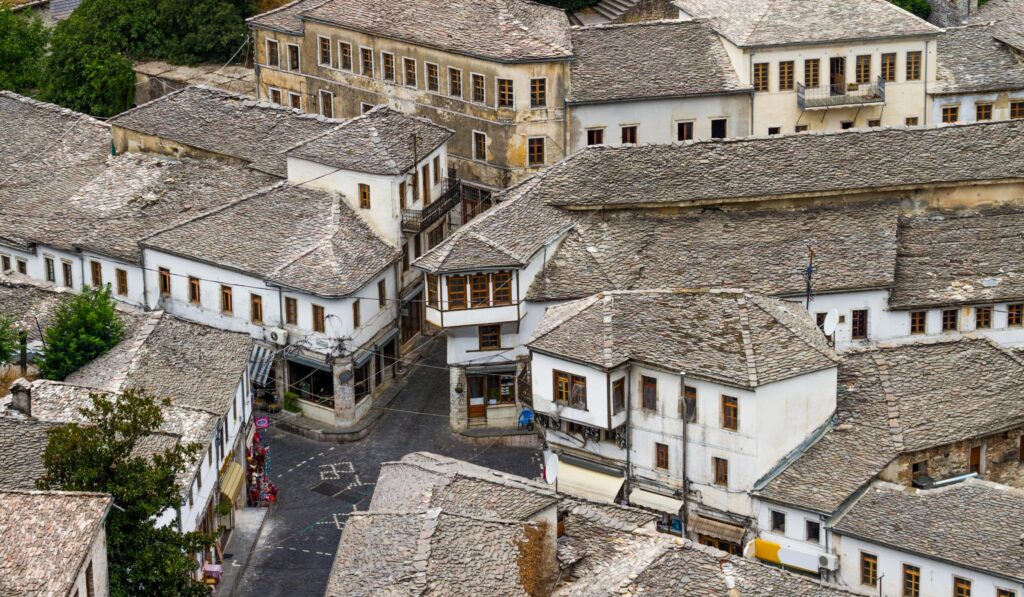
The city of Gjirokastra is part of the UNESCO World Heritage List and is one of the most attractive tourist sites of the country. Perched on the eastern side of the Wide Mountain (Mali i Gjërë), the city began as a fourth century castle, which is today the greatest castle in the whole country. Inside the fortress is the Museum of Weapons, where weapons of different periods up until the Second World War are displayed. Gjirokastra is known as “The City of Stone”.
The origin of the city starts with the castle of Gjirokastra, built in IV century AD. The city was named Argyrokastro, in 1336. In 1417, it was conquered by the Ottoman army. The city reached its peak over 1800-1830, when monumental assembly houses were built. The first neighborhoods are those of Bazaar and Hazmurate.
The main characteristic of Gjirokastra is the intensive use of stone in building the houses, which look like small fortresses, the streets of cobblestone, which all lead to Bazaar. You can also visit the Mosque of Bazaar here, built in 1557. Due to all these features, Gjirokastra is also known as the “The Stone City”.
The most important structure of the city is the castle, which is the biggest castle in Albania. Inside the castle, you can visit the Museum of Weapons,opened in 1971. Weapons from the prehistoric times up to the World War II are exhibited on here. The National Folk Festival has taken place in this castle during the years.
During your stay in Gjirokastra, you can visit the Ethnographic Museum, located in the house where the former communist dictator Enver Hoxha was born. This house (today a museum) is located in the Palorto quarter. You can also visit the house of Zekati family in Palorto, in a dominating position, which has undergone restoration. It is one of the most magnificent and characteristic buildings of Gjirokastra. Built in 1811-1812, it is a magnificent three-floor building and has two twin towers. A special feature of the house is the wooden carved ceilings and the characteristic guest room. From the wooden balcony in the third floor, you can enjoy an impressive view of Gjirokastra.Other important traditional buildings to visit are Angonati House , Babaramonewly restored house , Skendulaj house , Eqrem Cabej House under restoration , Kikino House and many others but also the statue of the main square dedicated to the patriot Cerciz Topulli and other important religious monuments of Bektashi sect and Orthodox religion .
One of the famous spotsto visit at Sokaku i te Marreve that means Mad People Street is also the reconstructed house of the famous Albanian writer Ismail Kadare
The town of Gjirokastra is also known for its culinary art; we can mention special dishes like pasha qofte, shapkat, oshaf with dried figs (a dessert with sheep`s milk, sugar and dried figs), etc.
In Gjirokastra you can visit interesting sites, part of the cultural heritage as well as natural wonders.
Antigonea
The archaeological park of Antigone is located near Saraqinishte village in the region of Lunxhëria, east of Gjirokastra. It is 14km away from Gjirokastra. The archeological park has a surface of 92 hectares.
Antigone was founded by King Pyrrhus of Epirus in 295 B.C., who named the town after his first wife, Antigone. At the end of 3rd century and the beginning of 2nd century BC, it grew into an important economic, cultural and political center and took the form of a state (polis).
It was surrounded by walls, 4,000 meters long. There are many attractions to be visited in the archaeological park Antigone such as: the mosaic, columns, promenade, an antique scale, the surrounding walls, etc. In the village of Labove e Kryqit, located near the small town of Libohova, you can visit one of the oldest and the most beautiful Byzantine churches in Albania, dedicated to St. Mary.
It is built in a style similar to that of Hagia Sophia in Istanbul. It was thought that the church used to have a relic, which is missing now. It was part of the cross where Christ was crucified.
Hadrianapolis
The ancient theatre of Hadrianapolis is located near the village of Sofratika, 14 km away from Gjirokastra, along the Gjirokastra – Kakavije (Greece) highway. The Hadrianopolis amphitheater was discovered by the Austrian archaeologist Prashniker. It dates back to the 2nd century B.C; it has a capacity of 4,000 seats and has 27 steps. Cajupi’s field lies in Lunxheria area, which is 1,310 meters above sea level; it is a flat area, which is used as climatic resort and surrounded by many sources of cold water.
2. Berat
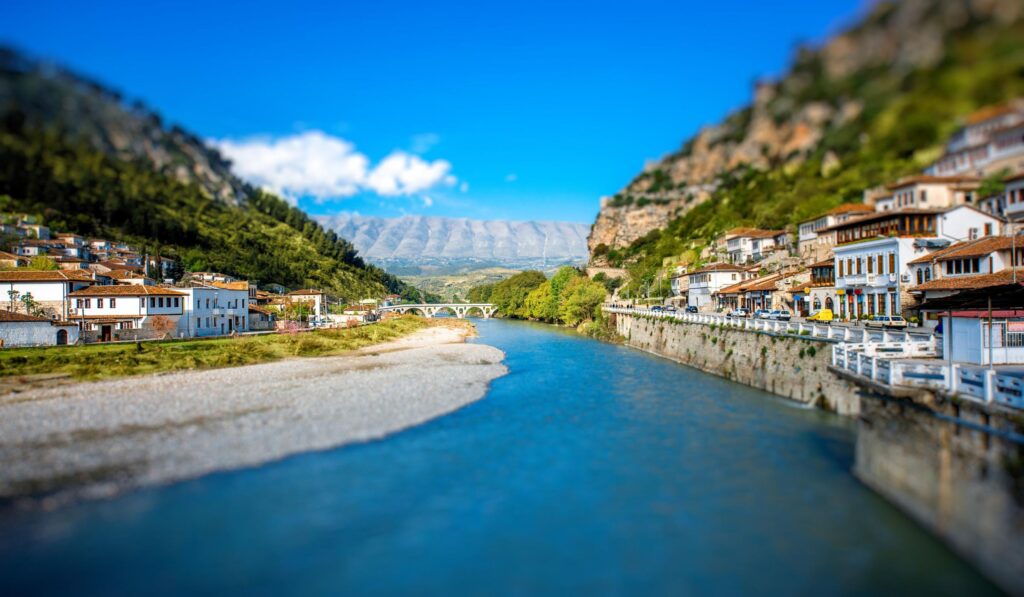
This 2,413 years-old city, the pride of Albanian architecture which is under the protection of UNESCO, is located 120 km from Tirana. The city forms a wonderful combination of eastern and western cultures, costumes, traditions and outlook. Berat is a treasure-trove of Albanian history, culture and a testament to the country’s tradition of religious harmony.
The city’s life began in the 6th-5th century B.C. as an Illyrian settlement. Later, in the 3rd century B.C., it was turned into a castle city known as Antipatrea. The castle expanded afterwards, particularly during the feudal dominion of the Muzakaj family. Inside the castle, they built churches with valuable frescoes and icons, and also a calligraphy school. Uniquely today, residents still live inside of the castle walls. The three major neighborhoods of the old city are Mangalemi, Gorica, and Kala, where the castle itself is located.
In Mangalemi, below the castle, you can see the famous view of the facades of the houses, with windows that seem to stand above each other. In general, a traditional house has two floors, where the second is prominent and has many cambered windows and wood carvings. With its houses built along the steep hill, the view of Mangalemi is the reason that another name for Berat is the City of the Floating Windows.
Across the Osum River lies the Gorica neighborhood, whose houses face those of Mangalemi. The arched bridge of Gorica, built in 1780, is a beautiful architectural monument constructed to link Gorica with Mangalemi.
The ensemble of the Byzantine churches in the castle of Berat is extraordinary. At the foot of the castle, there is the Byzantine Church of Shën Mëhilli (Saint Michael), while the 13th century Church of Shën Maria e Vllahernës (Saint Mary Blachernae) , the Church of Shën Triadha (The Holy Trinity), the post-Byzantine monumental Cathedral of Shën Maria (Saint Mary) and many other churches are located in the castle.
The Cathedral of Shën Mëria houses a museum of works by the famous iconographers of the 16th century: Onufri, and his son, Nikolla. There are over 100 icons on display and they also include works of other artists such as Joan Çetiri, Onufër Qiprioti, and many anonymous painters.
You also can visit the Monastery of Shën Spiridhoni (Saint Spyridon) in Gorica. In 1417, the Ottomans occupied Berat and this conquest left its mark with the building of monuments to the Islamic faith, such as the Xhamia e Kuqe (Red Mosque) inside the castle, the Xhamia e Plumbit (1555), the Xhamia e Beqarëve (Celibataires Mosque)(1872) in Mangalem quartier but also Xhamia Mbret (King Mosque) (16th century), and the Halveti Tekke or Tariqa in the medieval center . Other sites worth visiting are the Ethnographic Museum, situated inside an 18th century çardak building, and the Edward Lear Gallery of Art, a well-known English painter who painted much of Berat and Albania. In addition Berat is known for its traditional dishes. It is worth tasting specialties such as pula me përshesh and çorba e Tomorrit in the local restaurants. Is suggested also to visit the Saint Mountain of Tomorr .
3. Kruja
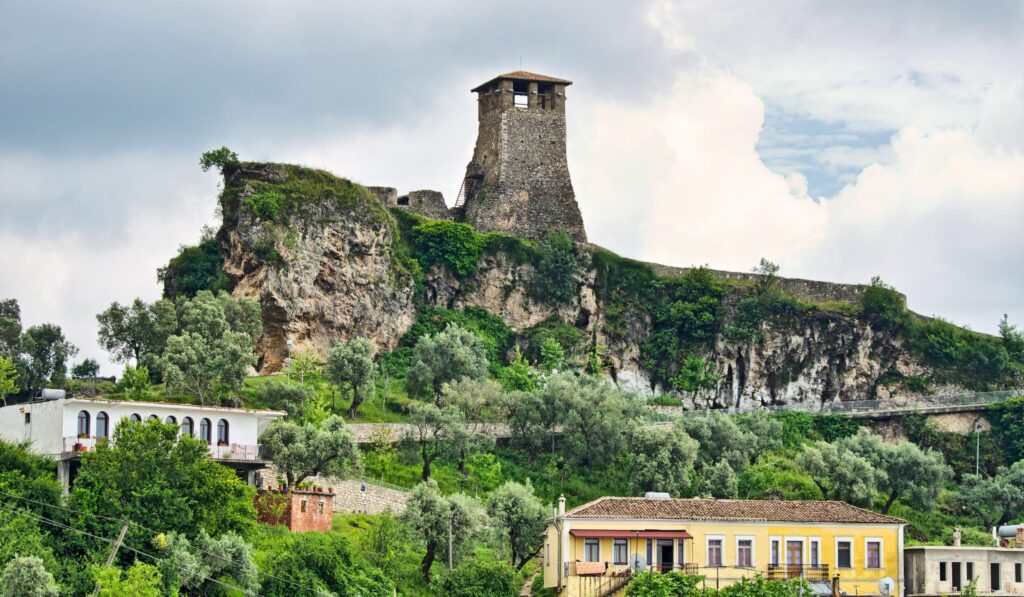
Kruja is just 32km away from Tirana and very close to Tirana International Airport. This historic city is 608m above sea level and offers an open vista to an amazing panoramic view.
The name and the importance of the city are closely related to the 25 years of activity of our national hero, Skanderbeg, who in the fifteenth century made Kruja a bastion of uncompromising resistance against the Ottoman. The Gjergj Kastrioti Skanderbeg Museum is situated inside the castle walls, which date back to the fifth and sixth centuries A.D.
The museum itself was inaugurated in 1981. Within the walls of the castle are also the Ethnographic Museum and the Dollma Tekke. Near the castle’s entrance is a traditional market, which dates back to the period of Skanderbeg. Here, tourists can find Albanian craft products such as embroidered items, carpeting, silver objects, copper, alabaster, filigree, traditional clothing, antiques at the traditional Old Baazar of Kruja .




